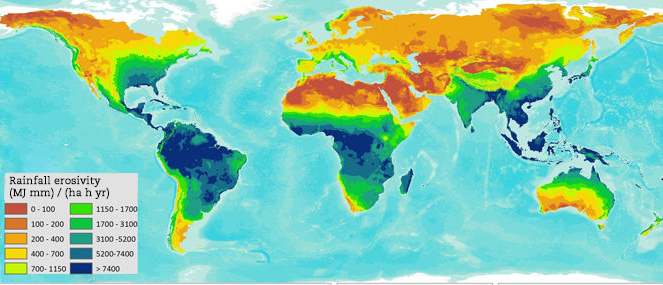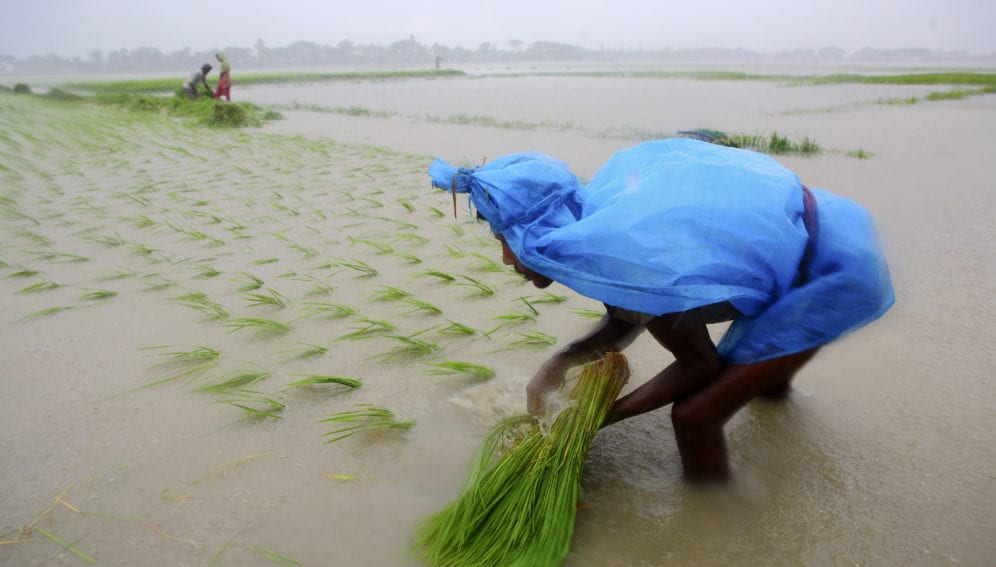By: Madhukara Putty
Send to a friend
The details you provide on this page will not be used to send unsolicited email, and will not be sold to a 3rd party. See privacy policy.
[NEW DELHI] Regions in the tropical climate zones suffer the greatest rainfall-related soil erosion, reports an international study.
The study, published last month (July) in Scientific Reports, has developed the first-ever Global Rainfall Erosivity Database and a Global Erosivity Map. It notes that while rainfall provides moisture critical for plant growth, it is also one of the prime causes of soil degradation, referred to as rainfall erosivity, which threatens food and water sustainability.
For experts, model predictions of global erosivity are very important because they help assess risks as well as plan and implement effective soil mitigation and restoration strategies.
According to the study, erosion by rainfall remains poorly quantified despite its significance. This is because it is a complex event influenced by various factors including rainfall intensity, duration, amount and frequency — factors which are not captured in current erosivity estimates.
“In a given year, there are rainstorms of different intensity and duration. Other factors like the protective vegetation also vary throughout the year”
Anton Vrieling
To model annual rainfall erosivity for different regions, the international team relied on rainfall data gathered from 3,625 stations scattered across 63 countries. Their analysis shows that annual mean rainfall erosivities for countries in the tropics are more than double the global average of about 2,190 megajoule millimetres per hectare per hour per year.
South America (particularly Brazil, Columbia and Peru), South-Eastern Asia (Cambodia, Indonesia, Malaysia, the Philippines and Bangladesh), the Caribbean, and Western and Central Africa have annual mean rainfall erosivities that are greater than 5,000 megajoule millimetres per hectare per hour per year.
Cold and dry regions like Canada, the Russian Federation, Northern Europe, Northern Africa and the Middle East have the lowest annual mean rainfall erosivity.
“The tropical forests and the monsoon zones (covering Amazonia part of Brazil, Central Africa and Southeast Asia) have intense rainfall but also excess monthly precipitation (greater than 1,000 millimetres for two consecutive months),” says Panos Panagos, study leader and scientific officer at the Joint Research Centre, European Commission. “The Mediterranean zone (a typical temperate climate zone) has seasonal rainfalls which are less intense than the ones in the tropical zones.”
Global erosivity map

Adapted from original in Scientific Reports.
“This is a great effort,” says Anton Vrieling, assistant professor of geo-information science and earth observation at the University of Twente, the Netherlands. However, he observes that calculating rainfall erosivity at different times in a year would be more useful than having an annual average value.
“In a given year, there are rainstorms of different intensity and duration. Other factors like the protective vegetation also vary throughout the year,” notes Vrieling.
Panagos says the emerging risks can be managed through good agricultural practices like reduced tillage, cover crops, grass margins and contour farming.
Annual mean rainfall erosivity above the global average, by region
| Region | Annual mean rainfall erosivity (in mega Joule millimeter per hectare per hour per year) |
| Global mean | 2,190 |
| Caribbean countries | 8,000 |
| South-East Asia | 7,400 |
| Western Africa and Central Africa | 7,000 |
| South America |
5,874 |
This piece was produced by SciDev.Net’s Asia & Pacific desk.














